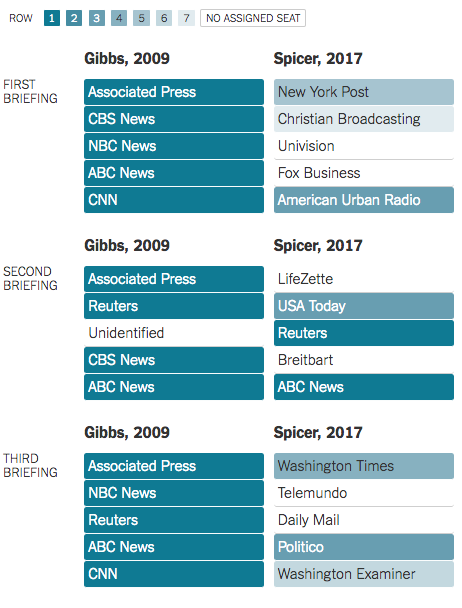Not unlike cable disrupted the big three news networks in the 1980s, to a smaller extent Sean Spicer has shifted the media landscape in his first three weeks as White House press secretary.
Rather than call on major networks like his predecessors, the White House press secretary regularly fields questions from less prominent outlets. And if rumors are true about Spicer losing his job, the shakeup could prove his most lasting legacy.
Press secretaries normally follow a sort of media triage when fielding questions, giving the most preference to outlets with the biggest audiences. Journalists with ABC, CBS, or NBC stamped on their credentials were almost always guaranteed a question. That all changed Jan. 24, 2017, when Spicer took the lectern for the first time.
Conservatives like to complain about the bias of the mainstream media, Spicer actually acted on it. During his first press briefing, he ignored the big three news networks and called on the New York Post, Christian Broadcasting, and Fox Business instead.
A handy infographic by The New York Times maps how dramatic shift played out over the first three briefings:

Normally, it’d be easy to dismiss this new batting order as a small change in media etiquette. But briefings are becoming more like boxing matches with the White House openly sparring with the press. Today, press briefings get better ratings than most soap operas.
Each briefing gives smaller outlets air time, effectively more oxygen to fuel their competition with the mainstream media. It’s an effect that will no doubt outlive Spicer’s tenure.
Philip Wegmann is a commentary writer for the Washington Examiner.
